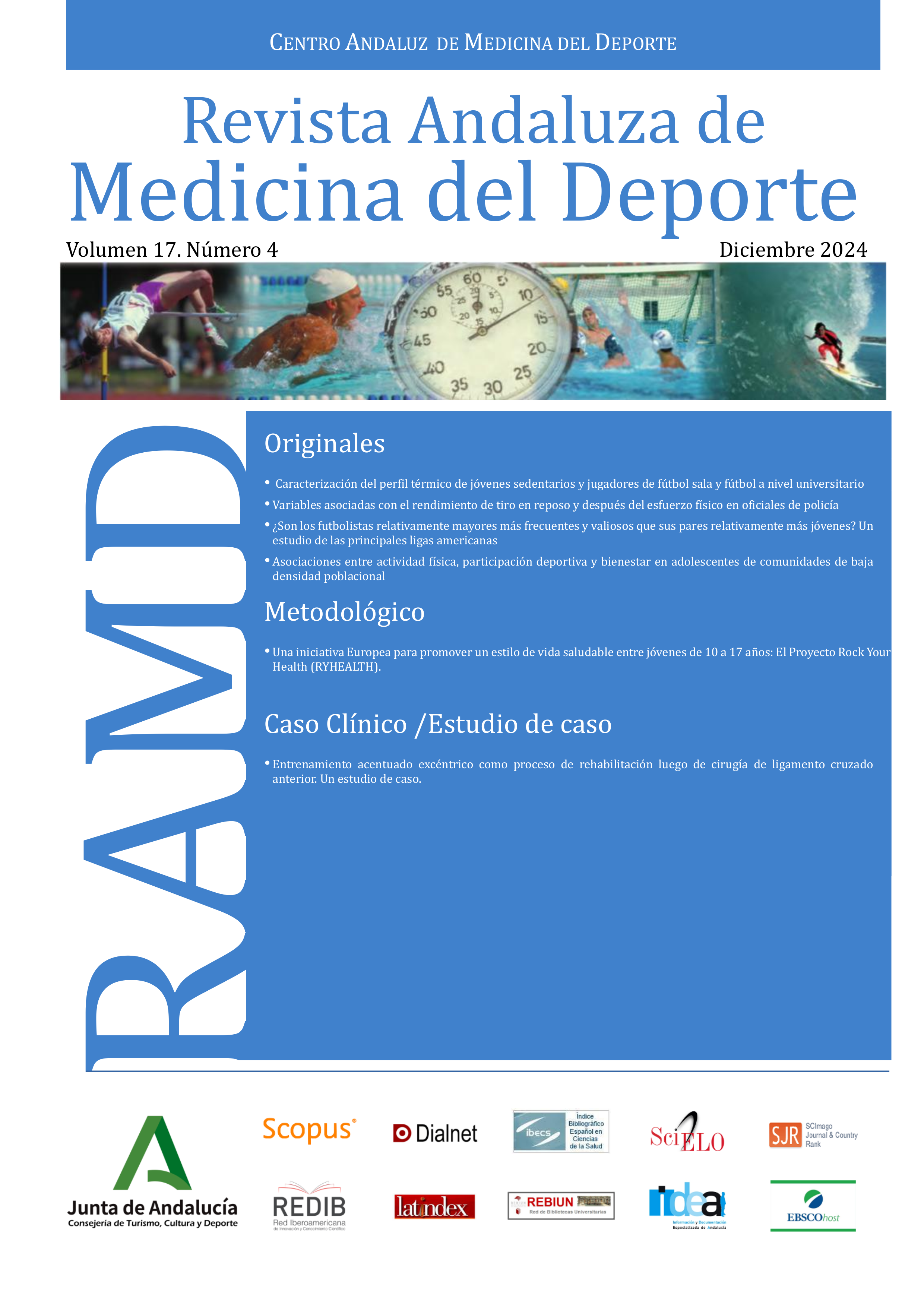Associations between physical activity, sports participation and well-being in adolescents from low-density communities
Abstract
INTRODUCTION: Regular physical activity (PA) and sports participation in youth are usually associated with improved physical and psychological health. However, this evidence is scarce among adolescents living in low-density communities. Therefore, this study aimed to investigate the associations between PA, organized sports participation and well-being in adolescents living in low-density u8areas of the Portuguese midlands.
METHODS: The sample comprised 245 adolescents (114 girls and 131 boys), aged between 12 and 17 years (M= 14.20, SD= 1.09), recruited from public schools located in low-density communities. Participants completed self-report measures of sociodemographic data, moderate-to-vigorous physical activity (MVPA) levels (PACE+), sports participation, and well-being (MHC-SF and the physical well-being subscale of the KIDSCREEN-27). A tri-axial accelerometer was used to assess intensity levels of PA during week and weekend days separately. ANCOVAs and partial correlations were used controlling for potential confounders.
RESULTS: After controlling for sex, chronological age and school’s context, findings indicated that adolescents meeting the MVPA guidelines reported higher levels of social and psychological well-being. In addition, physical well-being was positively associated with team sport participation, volume of sports training, self-reported MVPA levels (on weekdays and at the weekend) and MVPA assessed by accelerometry on weekdays. Sports participation revealed no significant effect on emotional, social and psychological well-being dimensions.
CONCLUSIONS: The findings revealed small to moderate effects of MVPA and sports participation on physical well-being. Conversely, the adolescents’ social and psychological well-being was positively associated only with higher levels of self-reported MVPA.
Keywords: Physical activity, youth sports, well-being, adolescence.


